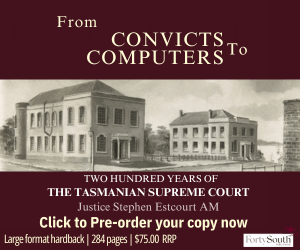Once your client has decided to appeal to the Federal Court, you must familiarise yourself with the range of procedural requirements contained in Chapter 4 of the Federal Court Rules 2011 (Cth) and in practice notes published by the court.
This article steps through some of the main requirements that you will need to comply with when preparing for a Federal Court appeal.
How to commence an appeal
Your client must generally appeal within 28 days of the original decision.1 Your client commences the appeal by filing a notice of appeal, generally in the registry where the original matter was heard.2
The appropriate form depends on the type of decision being appealed. Use Form 121 if your client is appealing from the Federal Circuit Court of Australia or Form 122 for an appeal from any other court or from a single judge of the Federal Court.3
You must serve the notice of appeal on each party to, or given leave to intervene in, the original matter.4 Once the appeal is started, the court will assign a callover date. Arrangements are made for the preparation and filing of the appeal books.
Who will hear the appeal?
Civil appeals are typically heard by a Full Court of three or more judges sitting together.5 Appeals from the Federal Circuit Court will be heard by a single judge unless it is appropriate for a Full Court to sit.6 The Federal Court can also hear appeals from certain tribunals,7 including the Administrative Appeals Tribunal (tribunal appeals).
This article focuses on appeals other than tribunal appeals, so if your client is appealing under the Administrative Appeal Tribunal Act 1975 (Cth), comply with Division 33.2 of the Federal Court Rules (instead of Division 36, which is discussed in this article).
Preparing for an appeal hearing
When preparing for an appeal, you must be familiar and meet the requirements of the Federal Court’s Practice Note APP 2.8 It sets out a range of procedural requirements.
If any of the requirements are not followed, the party not in default must bring that matter to the attention of the chambers of the judge hearing the appeal, or of the presiding judge if more than one judge is sitting. The party not in default must notify the other parties to the appeal. The judge will then make appropriate directions.9
Appeal books
You must file two appeal books if the appeal will be heard by a single judge, or four copies if the Full Court is hearing the appeal.10 If more than three judges are sitting as the Full Court, you must apply to a registrar for a direction about how many appeal books must be filed.11 You also need enough copies to serve on each respondent.12
Limitations on content
The Federal Court has strict requirements about what can be included in an appeal book. Only the material mentioned in Division 36.5 of the Federal Court Rules can be included.13
There are cost consequences for including additional material. First, your client must pay the costs of any other party to the appeal that are incurred as a result of the additional material.14 Second, you cannot charge your client any costs incurred by including the material.15
Parts A, B and C
An appeal book must be divided into Parts A, B and C.16 Rule 36.53 lists the information to include on the title page of each part.
- Part A consists of a Core Set of Standard Items that must be indexed and arranged strictly in accordance with the Federal Court Rules.17 Part A must include (among other things) the originating application and pleadings, any interlocutory applications and notices of motion, the decision appealed and the associated reasons and sealed orders, and the notice of appeal. This list is not exhaustive; rule 36.54(a) of the Federal Court Rules contains the complete list. Place the Part A materials in one or more ring or lever-arch folders with each item behind a unique tab number.18
- Part B is the Comprehensive Reference Index of all the evidence (whether relevant or not) in the original matter but not the evidence itself.19 The front page of Part B needs to include the following note:20
‘Note: The exhibits, affidavits, annexures and transcript referred to in the Comprehensive Reference Index are taken to form part of the appeal book for the appeal but will not be reproduced in hardcopy unless required.’
Each exhibit, affidavit, annexure or transcript should have a unique tab number and the index should be arranged in the order set out in rule 36.54(b).21
- Part C must include the parties’ outlines of submissions (ordered by the date filed), each party’s chronology, and one copy of any exhibits and evidence referred to in the submissions.22 Part C should be arranged in one or more ring or lever-arch folders.23 The evidence must be arranged in the same order as Part B,24 with documents separated behind the unique tab numbers from the Comprehensive Reference Index.25
The court’s requirements for Part C make clear that brevity is required. If evidence is referred to by more than one party, the document should only be reproduced in hardcopy once.26 Part C should only include evidence that is necessary to determine the issues raised in the outlines of submissions.27 Complete documents are to be included in Part C only if required for the court to properly understand the parts of the document relied on.28
In most cases, the court will have electronic access to the transcript below and any exhibits, affidavits or annexures that were eLodged in the original matter. The first instance file is normally available also in hardcopy.29
Each item in the appeal book should be copied on both sides of the page with every new document starting on a fresh page.30 There is no need to paginate or re-paginate any part of the appeal book if the original document is paginated.31
Timetable for filing Parts A and B
Depending on the appeal, there may be a good deal of work in preparing an appeal book. You should commence the work as soon as possible because agreed drafts of the index for Part A and Part B generally must be submitted to the registrar within 28 days of serving the notice of appeal.32
The front page of the draft indexes needs to include a notation that the drafts are agreed by all parties.33 Within 14 days of the registrar confirming that the draft indexes have been approved, you must file and serve the complete version of Part A (including the documents indexed and tabbed) and the Part B index.34
Timetable for filing Part C
Your client’s outline of submissions and chronology must be filed and served at least 20 business days before the hearing of the appeal.35 Then, not later than 15 days before the hearing, each respondent must file and serve its outline of submissions and chronology on your client,36 together with a list of materials that need to be included in Part C of the appeal book. That list should identify materials using the unique tab numbers that you nominated in the Part B index.37
If your client wishes to rely on submissions in reply, those must be filed and served at least 10 business days before the hearing.38 No later than five business days before the hearing, your client must file and serve Part C of the appeal book.39
Submissions
Your client’s outline of submissions must not exceed 10 pages, including annexures, unless leave has been granted to exceed this limit. The submissions must include a concise statement of the issues on appeal and your client’s outline of argument on each. The document should be in font of at least 12 points with 1.5 line spacing (including for footnotes and annexures).40
Clearly identify any of the primary judge’s findings of fact that your client challenges. Explain why the finding was wrong and what the finding should have been, with reference to relevant evidence.41 Cross-reference materials in the appeal book using the relevant tab numbers.42 Prepare a chronology of relevant events to accompany the outline of submissions.43
Make sure that the outline of submissions covers all the points that may be raised in oral argument. New issues that are not included in the outline may not be advanced during the hearing without the court’s leave.44
Lists of authorities and citations
You must file and serve a list of authorities and legislation that you will rely on in the hearing by no later than 4pm on the day that is five business days before the hearing date. The respondent’s list is due by 4pm one business day later.45
If a party does not comply with those requirements, any party not in default must notify the chambers of the judge hearing the matter (or of the presiding judge) so that appropriate orders can be made.46
The court provides guidance about how to prepare the list of authorities in a practice note: Lists of Authorities and Citations Practice Note (GPN-AUTH), which is available at fedcourt.gov.au/law-and-practice/practice-documents/practice-notes/gpn-auth.
The list of authorities is split into two parts. The first part contains only authorities from which passages are to be read during the appeal hearing. The second part lists the authorities that might only be referred to and not read from.47
The Lists of Authorities and Citations Practice Note provides a level of detail about the format of references to legislation and cases. It gives some helpful examples of citations in the correct form.48 Once you have prepared the list, you should file it in PDF text searchable format via eLodgment.49
The parties are responsible for providing copies of the authorities to the judge(s).50 Subject to specific requirements in your matter (if any), the court prefers that authorities be provided digitally by email, if file sizes permit, or on a USB stick.51
Electronic appeals
The court will decide whether the appeal will be conducted electronically after consulting other judges, registrars, court employees and the parties.52 If you want the appeal to be electronic, you need to make that request in writing and include your specific proposal.53 Before making the request, you should read the Federal Court’s Central Practice Note (CPN-1)54 and Technology and the Court Practice Note (GPN-TECH).55
Conclusion
The Federal Court has published detailed practice notes to help you and your client prepare for an appeal. Make sure you are aware of the requirements. Not only must you comply with them, you must bring the court’s attention to any default by another party.
Kylie Downes QC is a member of Northbank Chambers and the editorial committee of Proctor. Jane Menzies is a Brisbane barrister and associate member of Northbank Chambers.
Footnotes
1 Federal Court Rules 2011 (Cth) (FCR), r36.03.
2 FCR, r36.02.
3 FCR, r36.01(1).
4 FCR, r36.04(1).
5 Federal Court of Australia Act 1976 (Cth), ss14(2), 25(1).
6 Federal Court of Australia Act 1976 (Cth), s25(1AA).
7 Federal Court of Australia Act 1976 (Cth), s19(2).
8 Available at fedcourt.gov.au/law-and-practice/practice-documents/practice-notes/app2.
9 Practice Note APP 2 at [2.1].
10 FCR, r36.51(1).
11 FCR, r36.51(2).
12 Practice Note APP 2 at [8.4].
13 FCR, r36.51(4)(b).
14 FCR, r36.51(5)(b).
15 FCR, r36.51(6).
16 FCR, r36.51(3).
17 FCR, r36.54(a).
18 Practice Note APP 2 at [3.5].
19 FCR, r36.54(b).
20 Practice Note APP 2 at [3.6(a)]; compare FCR, r36.54(b)(i) which has slightly different wording.
21 Practice Note APP 2 at [3.6(b)].
22 FCR, r36.54(c); Practice Note APP 2 at [6.1].
23 Practice Note APP 2 at [6.1].
24 FCR, r36.54(c).
25 Practice Note APP 2 at [6.1].
26 See the note to [6.1] of Practice Note APP 2.
27 Practice Note APP 2 at [6.2].
28 Practice Note APP 2 at [6.3].
29 Practice Note APP 2 at [7.2].
30 Practice Note APP 2 at [3.3].
31 Practice Note APP 2 at [3.4].
32 FCR, r36.52(2).
33 Practice Note APP 2 at [4.2].
34 Practice Note APP 2 at [4.3]; FCR, r36.52(4).
35 Practice Note APP 2 at [8.1]; FCR, r36.55(2)(a).
36 Practice Note APP 2 at [8.2]; FCR, r36.55(2)(b).
37 Practice Note APP 2 at [8.2].
38 Practice Note APP 2 at [8.3]; FCR, r36.55(2)(c).
39 Practice Note APP 2 at [8.4]; FCR, r36.56.
40 Practice Note APP 2 at [5.2].
41 Practice Note APP 2 at [5.3].
42 Practice Note APP 2 at [5.5].
43 Practice Note APP 2 at [5.4]; FCR, r36.55(1)(b).
44 Practice Note APP 2 at [5.9].
45 Lists of Authorities and Citations Practice Note (GPN-AUTH) at [3.1] and [3.2]; Practice Note APP 2 at [10.1]; FCR, r36.55(3).
46 Lists of Authorities and Citations Practice Note (GPN-AUTH) at [3.3].
47 Lists of Authorities and Citations Practice Note (GPN-AUTH) at [2.1].
48 Lists of Authorities and Citations Practice Note (GPN-AUTH) at [2.3] to [2.7].
49 Lists of Authorities and Citations Practice Note (GPN-AUTH) at [2.2].
50 Lists of Authorities and Citations Practice Note (GPN-AUTH) at [4.1].
51 Lists of Authorities and Citations Practice Note (GPN-AUTH) at [4.3].
52 Practice Note APP 2 at [11.1].
53 Practice Note APP 2 at [11.2].
54 Available at fedcourt.gov.au/law-and-practice/practice-documents/practice-notes/cpn-1.
55 Available at fedcourt.gov.au/law-and-practice/practice-documents/practice-notes/gpn-tech.










Share this article